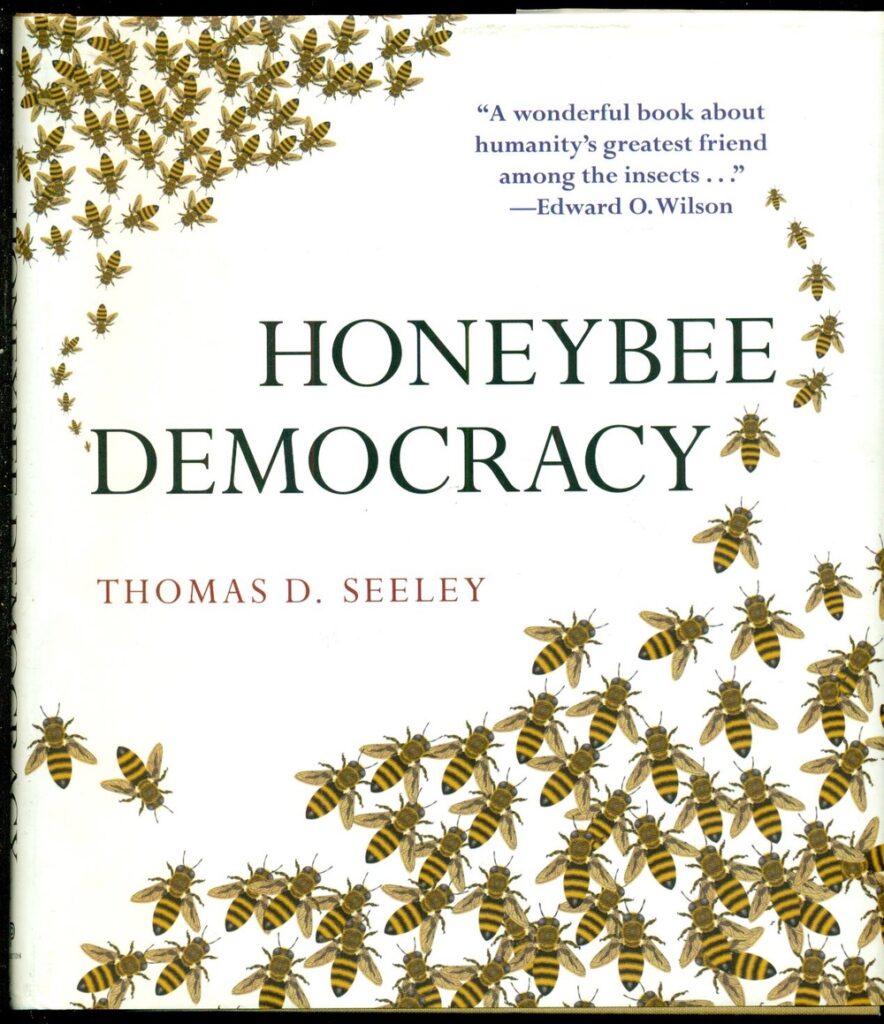Sharing my learnings from the book, Honeybee Democracy by Thomas D. Seeley.
Honeybee Democracy by Thomas D. Seeley
Honeybees make decisions collectively — and democratically. Every year, faced with the life-or-death problem of choosing and traveling to a new home, honeybees stake everything on a process that includes collective fact-finding, vigorous debate, and consensus building. In fact, as world-renowned animal behaviorist Thomas Seeley reveals, these incredible insects have much to teach us when it comes to collective wisdom and effective decision making. A remarkable and richly illustrated account of scientific discovery, Honeybee Democracy brings together, for the first time, decades of Seeley’s pioneering research to tell the amazing story of house hunting and democratic debate among the honeybees.

- the bees deeply democratic decision-making process using highly evolved skills (independent research & community debate) is a model we can all learn.
- a group of 10,000 people when asked, you’ll get a chaotic response but a swarm of 10,000 bees is remarkably good at making up its collective mind
- every year, honeybees choose a new nest site (their new home) through a complex, democratic process
- honeybees are often called a super organism, a whole colony that acts as a single creature, even though it’s made up of some 10,000 individuals
- at the heart of the hive is the queen whose only task is to lay eggs. Each summer she lays 150,000
- ~95% – worker bees (female)
- ~05% – drones (male) track down queens from other colonies and mate with them
- honeybees evaluate potential nest sites carefully to find the best possible new home
- a honeybee spends an average of 37 minutes making around 30 journeys inside the new space, walking around and making short flights. Once finished, the bee heads gone, with plenty of information to tell its hive mates
- scout bees spread the word about potential best sites and gradually reach agreement
- humans use representative democracy where individuals make decisions on the population’s behalf.
- honeybees use direct democracy where many individuals make decisions directly. The decision making bees aren’t the entire swarm but the scout bees that fly out and evaluate potential nest sites. However, they pass the decision on to their peers, who then go & make up their own minds. This way, a true consensus emerges.
- mistakes are a rarity when it comes to choosing a new nest site. Any individual bee might make a mistake, but when a large number of bees is doing the same thing, the risk is limited & the best decision almost always emerges.
- when the time comes to move, a swarm of honeybees acts with a remarkable cohesion.
- once a scout bee is sure the time has come, she returns to the nest and the following happens:
- scout bee begins making a high-pitched noise (piping) that alerts the bees to the move & promote them to get ready by raising the swarm’s temperature.
- the scout bees then start buzz running, they run in all directions across the swarm, spreading their wings & buzzing loudly
- the swarm takes off, with the scout bees leading the way
- as it approaches the site, the swarm slows down coming to a graceful halt outside then the bees filter into their new home and goes straight to work
- we can learn a lot from the democratic decision making process of honeybees
– one key difference between humans and honeybees is the shared common goal of the hive while people work toward different goals Lessons:- place little emphasis on leaders. Scout bees’ opinions all count equally so there’s no risk that one bee will force the swarms into a poor decision
- always look for multiple solutions. Scout bees fly in different directions when looking for nest sites, maximizing the number of possibilities
- consider using bees’ approach to decision making. If a group needs a good decision, it’s sometimes worth pressing ahead once it’s clear an idea will definitely work (even if it doesn’t have universal approval)
- let people build knowledge independently. Giving people the space to form their own opinions leads to healthier, better-informed debates.


Leave a Reply